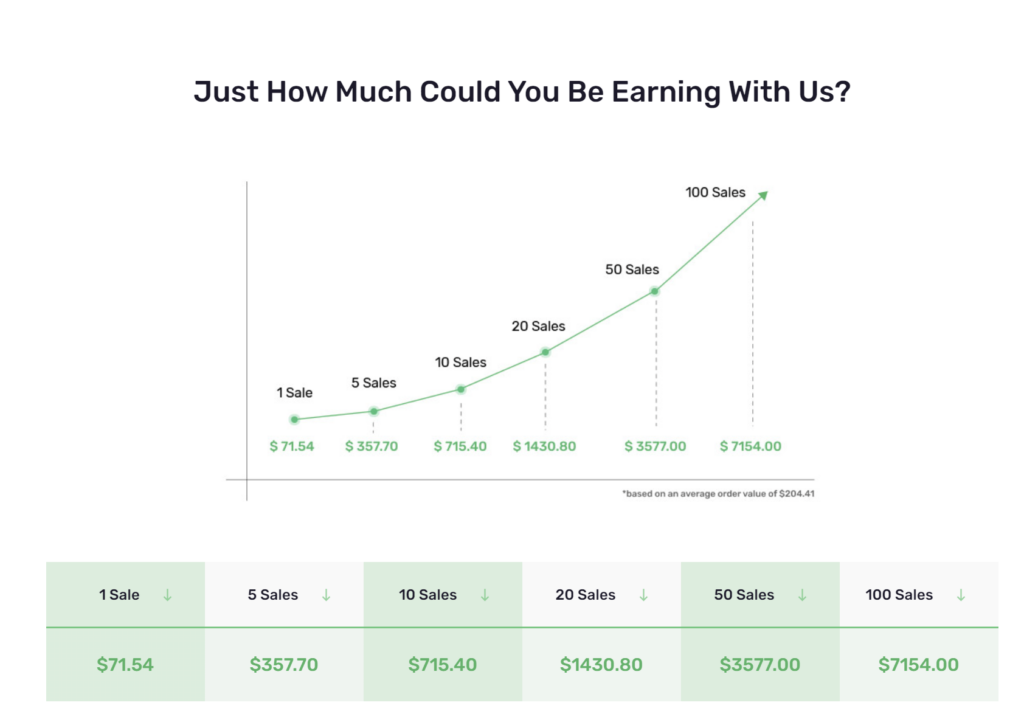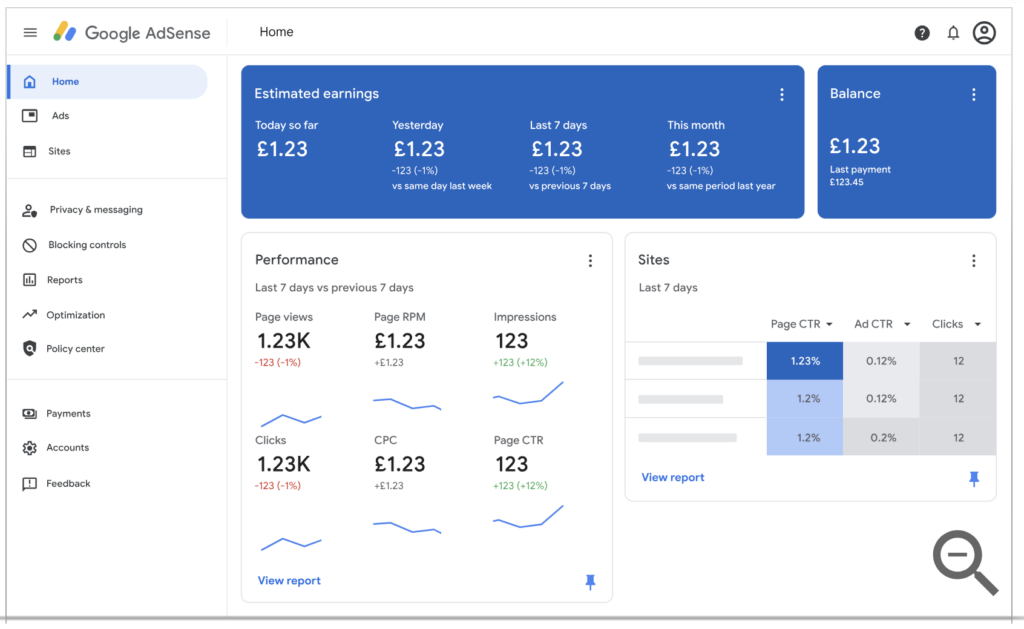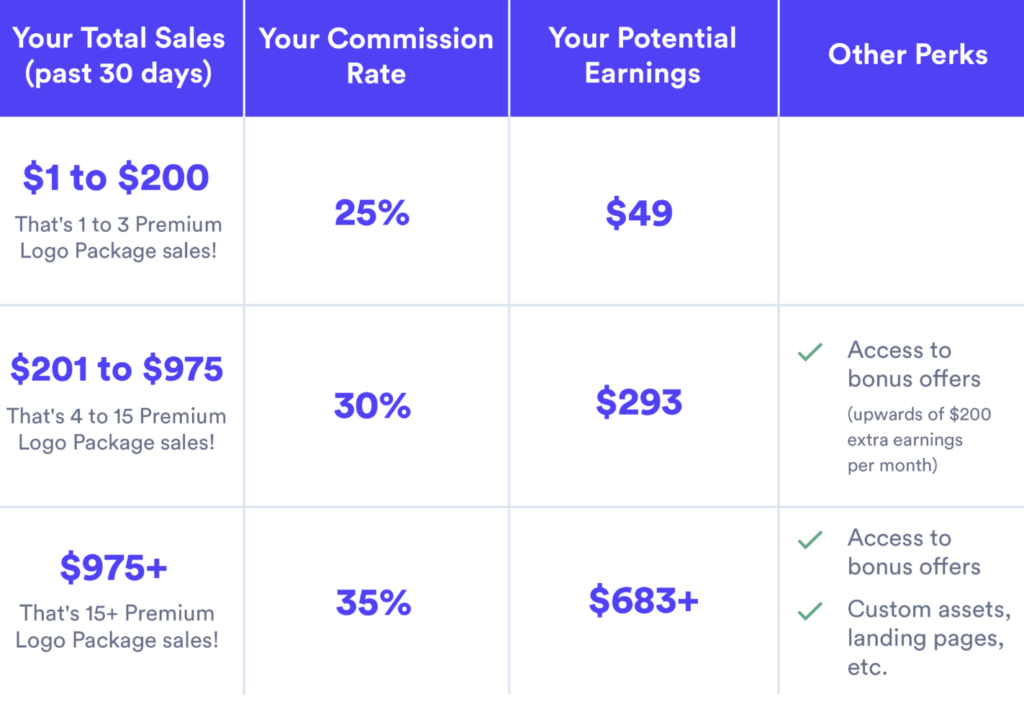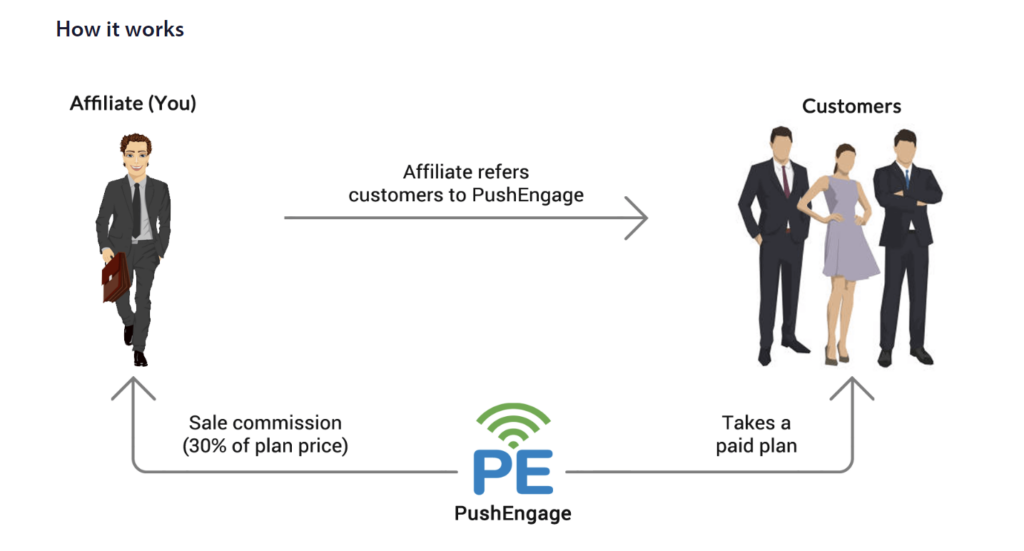Inhalt

Fragen Sie sich, welches der Affiliate-Provisionsmodelle das richtige für Sie ist? Wenn ja, dann haben wir für Sie gesorgt!
Affiliate-Marketing hat die Art und Weise, wie Menschen online Geld verdienen, grundlegend verändert. Die Förderung von Produkten oder Dienstleistungen ermöglicht es Affiliate-Vermarktern, Provisionen für Verkäufe, Leads oder andere Aktionen zu verdienen, die über ihre Empfehlungslinks getätigt werden, was sich in mehr Geld auf der Bank niederschlägt.
Dieses Geschäftsmodell hat viele spannende Möglichkeiten für Verkäufe und Partnerschaften eröffnet, was es zu einer klugen Wahl für Content-Ersteller und Vermarkter in allen Branchen macht.
Es gibt verschiedene Provisionsmodelle für Partner, die sich darauf auswirken können, mit wem Sie zusammenarbeiten möchten. Diese verschiedenen Modelle bestimmen, wie und wann Sie bezahlt werden. Es ist also nicht schwer zu verstehen, warum die Wahl des richtigen Modells für Ihre Bedürfnisse und langfristigen Ziele so wichtig ist.
Heute werden wir 7 der gängigsten Affiliate-Provisionsmodelle vorstellen, die Sie kennen sollten. Unser Ziel ist es, aufzuschlüsseln, wie jeder Typ funktioniert, sowie die Vor- und Nachteile, die Sie beachten müssen, bevor Sie entscheiden, was das Richtige für Sie ist.
Darüber hinaus bieten wir Ihnen umsetzbare Erkenntnisse, die Ihnen helfen, das richtige Modell für Ihre Bedürfnisse auszuwählen und es effektiv in Ihre Marketingstrategie zu integrieren.
| Partner-Kommissionsmodell | Beschreibung |
| Bezahlung pro Verkauf (PPS) | Partner verdienen eine Provision für jeden Verkauf, der über ihren Empfehlungslink zustande kommt, in der Regel einen Prozentsatz des Verkaufsbetrags. Es ist beliebt, erfordert aber Geschick bei der Umwandlung von Besuchern in zahlende Kunden. |
| Bezahlung pro Lead (PPL) | Affiliates verdienen durch die Generierung von Leads, z. B. Anmeldungen oder das Ausfüllen von Formularen, und nicht durch Verkäufe. Dies ist leichter zu erreichen als Verkäufe, bietet aber in der Regel geringere Auszahlungen. |
| Bezahlen pro Klick (PPC) | Affiliates erhalten jedes Mal eine Provision, wenn ein Besucher auf ihren Empfehlungslink klickt, unabhängig davon, ob ein Verkauf oder ein Lead zustande kommt. Es ist einfach zu verwalten, bietet aber geringere Einnahmen pro Klick. |
| Wiederkehrende Provisionen | Affiliates verdienen fortlaufende Provisionen, solange der geworbene Kunde weiterhin für einen Abonnementdienst zahlt. Es bietet einen stetigen Einkommensstrom, aber es braucht Zeit, um Einnahmen zu erzielen. |
| Gestaffelte Provisionen | Affiliates erhalten höhere Provisionssätze, wenn sie mehr Verkäufe oder Leads erzielen. Das ist motivierend, aber es kann eine Herausforderung sein, höhere Stufen zu erreichen, besonders für Anfänger. |
| Zweistufige Partnerprogramme | Affiliates verdienen Provisionen an ihren Verkäufen und an den Verkäufen anderer Affiliates, die sie geworben haben. Es ist eine Möglichkeit, das Einkommen zu diversifizieren, erfordert aber starke Rekrutierungs- und Managementfähigkeiten. |
| Pauschalierte Provisionen | Affiliates verdienen einen festen Betrag für jeden Verkauf oder jede Aktion, unabhängig vom Wert des Verkaufs. Das ist einfach und vorhersehbar, aber es fehlen Anreize für höherpreisige Transaktionen. |
Bezahlung pro Verkauf (PPS)
Pay Per Sale (PPS) ist eines der am weitesten verbreiteten Provisionsmodelle für Affiliates. Mit PPS verdienen Affiliates jedes Mal eine Provision, wenn sie jemanden davon überzeugen, ein Produkt oder eine Dienstleistung zu kaufen über ihren exklusiven Empfehlungslink. In den meisten Fällen ist der Betrag, den die Partner verdienen, ein Prozentsatz dessen, wie viel die Kunden ausgeben.
Wenn der PPS-Satz beispielsweise 10% beträgt, würde ein Auftrag von $100 dem Partner $10 einbringen.
Viele Affiliate-Vermarkter bevorzugen dieses Provisionsmodell, weil sie ihre Einnahmen mit dem Wachstum ihrer Zielgruppe steigern können. Wenn sie Produkte verkaufen, verdienen sie mehr Geld, so einfach ist das. Wir haben gelernt, dass die Korrelation zwischen Marketing und Verdienst sehr motivierend sein kann.

Es erfordert aber auch ein gewisses Maß an Geschick und Mühe, um Besucher in zahlende Kunden umwandelnFür neue Affiliate-Vermarkter, die sich noch keine feste Zielgruppe aufgebaut haben, könnte dies also eine größere Herausforderung sein.
Ein weiterer Nachteil ist, dass die Konversionsraten relativ niedrig sein können, weil es einfacher ist, Menschen dazu zu bringen, etwas zu tun, z. B. einen Blogbeitrag zu lesen oder sich in eine E-Mail-Liste einzutragen, als sie dazu zu bringen, ihre Kreditkarte zu zücken und einen Kauf zu tätigen.
Trotz dieser Herausforderungen ist PPS eine der beliebtesten Möglichkeiten, als Affiliate-Vermarkter Geld zu verdienen.
Wenn Sie darüber nachdenken, dieses Modell selbst auszuprobieren, haben Sie Glück. Wir haben festgestellt, dass fast 80% der Online-Unternehmen haben irgendeine Form eines Partnerprogramms, es gibt also viele Möglichkeiten, unabhängig von Ihrer Nische.
Bezahlung pro Lead (PPL)
Mit Pay-per-Lead (PPL), Partner verdienen durch die Generierung von Leads und nicht durch Verkäufe.
Ganz einfach: Sie werden bezahlt, wenn ein geworbener Besucher eine bestimmte Aktion auf einer der Websites Ihres Partners durchführt, z. B. sich für einen Newsletter anmeldet, ein Formular ausfüllt oder sich für eine kostenlose Testversion registriert. Es ist eine beliebte Wahl für Branchen mit längeren Verkaufszyklen, da es sich auf das Erfassen von Interesse und potenziellen Kunden konzentriert und nicht auf den sofortigen Verkauf.
Ein bemerkenswerter Vorteil eines PPL-Modells ist, dass es im Allgemeinen einfacher ist, Leads als Verkäufe zu generieren. Menschen zögern oft, einen Kauf zu tätigen, wenn sie eine Website zum ersten Mal entdecken, aber sie sind oft eher bereit einer E-Mail-Liste beitreten.
Die niedrigere Einstiegshürde bedeutet, dass auch neue Partner sofort Geld verdienen können, ohne komplexe Verkaufstechniken beherrschen zu müssen.
Allerdings gibt es auch einige Nachteile zu beachten. Da es in der Regel einfacher ist, einen Lead zu generieren als einen Verkauf zu tätigen, sind die Auszahlungen pro Lead im Vergleich zu PPS in der Regel geringer. Mit anderen Worten: Sie brauchen einen hohes Volumen an Leads um eine Dynamik aufzubauen und erhebliche Gewinne zu erzielen.
Es gibt zwar einige Nachteile, aber viele Unternehmen halten das PPL-Modell für sehr effektiv und sind bereit, für qualitativ hochwertige Leads zu zahlen, was bedeutet, dass es einen Markt für Affiliates gibt.
Branchen wie Kreditkartenunternehmen und Versicherungen nutzen dieses Modell häufig, da sie den Wert der Akquise potenzieller Kunden zu schätzen wissen, die im Laufe der Zeit in Verkäufe umgewandelt werden können.
Bezahlen pro Klick (PPC)
Das Pay-per-Click (PPC)-Modell ist eine weitere Möglichkeit für Affiliates, um jedes Mal Geld verdienen, wenn ein Besucher auf einen Partnerlink klickt. Im Gegensatz zu den beiden anderen bisher besprochenen Provisionsarten muss der Besucher beim PPC-Modell nichts weiter tun, als den Link zur Partner-Website anzuklicken.
PPC ist weit verbreitet, weil es einfach, leicht zu verwalten und in den meisten Fällen effektiv ist. Es ist eine leistungsstarke Möglichkeit für Unternehmen, ihre Markenbewusstseinbesonders wenn sie gerade erst anfangen.
Da Sie die Besucher nicht überzeugen müssen, etwas zu kaufen oder etwas auszufüllen, können Sie schnell anfangen, Provisionen zu verdienen. Diese Provisionsart ist besonders vorteilhaft für neue Mitgliedsorganisationen die vielleicht noch nicht über die Fähigkeiten oder die Erfahrung verfügen, um Verkäufe zu tätigen oder Leads zu generieren.
Das PPC-Modell hat jedoch auch seine Nachteile. Die Provisionen pro Klick sind in der Regel niedrig, sogar niedriger als bei PPC, was bedeutet, dass Sie ein noch größeres Volumen an Klicks benötigen, um anständige Einnahmen zu erzielen. Außerdem besteht die Gefahr, dass Sie minderwertigen Traffic anziehen, der sich nicht in Leads oder Verkäufe für den Werbetreibenden umwandelt, was sich auf die Langlebigkeit und den langfristigen Erfolg Ihrer Partnerschaften auswirken kann.
Google AdSense ist die bekannteste Version von PPC. Dieses Programm ermöglicht es Affiliates Verkehr monetarisieren einfach durch das Hinzufügen von Anzeigenblöcken auf ihren Webseiten. Unserer Erfahrung nach ist dies besonders lukrativ für Websites, die viel Traffic und Engagement erhalten.
Letztendlich bietet PPC vielleicht nicht die höchsten Auszahlungen, aber es ist immer noch eine attraktive Option für viele Affiliates, weil es leicht zugänglich und verfügbar ist.

Wiederkehrende Provisionen
Das Modell der wiederkehrenden Provisionen ist eine der besten Möglichkeiten, um ein regelmäßiges Einkommen erzielen. Wie der Name schon sagt, verdienen Partner mit wiederkehrenden Zahlungen so lange, wie der Kunde eine Dienstleistung nutzt und dafür bezahlt.
Der größte Vorteil ist auch mit dem Namen verbunden: Im Gegensatz zu einmaligen Zahlungen können Sie mit wiederkehrenden Provisionen immer wieder an denselben Kunden verdienen.
Dieses Modell wird am häufigsten bei abonnementbasierten Produkten wie Softwarediensten (SaaS) verwendet, Mitgliederseitenund andere regelmäßige Zahlungsdienste.
SaaS-Produkte sind besonders attraktiv, weil sie oft Provisionen von 20% bis 70%. Das bedeutet, dass Sie jedes Mal, wenn ein Kunde seine Abonnementgebühr bezahlt, 20 bis 70% dessen verdienen können, was eine Lizenz kostet!
Das hohe Verdienstpotenzial, kombiniert mit regelmäßigen Zahlungen, kann jeden Kunden zu einer langfristigen Einkommensquelle machen.
Der Aufbau eines bedeutenden Einkommens mit diesem Modell braucht jedoch Zeit. Zu Beginn sind Ihre Einnahmen vielleicht gering, weil es Zeit braucht, um Menschen davon zu überzeugen, ein neues Produkt zu abonnieren. Es ist wichtig, qualitativ hochwertige Dienstleistungen zu bewerben, die Sie selbst nutzen und denen Sie vertrauen, da die Menschen diese Authentizität spüren und eher bereit sind, dabei zu bleiben.
Wiederkehrende Provisionen können sehr lohnend sein, wenn Sie geduldig sind und sich auf den Aufbau langfristiger Beziehungen zu Ihrem Publikum konzentrieren.
Gestaffelte Provisionen
Ein gestaffeltes Provisionsmodell ist darauf ausgelegt Partner für ihre Leistung zu belohnen. Im Klartext: Ihre Auszahlung erhöht sich je nachdem, wie viele Verkäufe oder Leads Sie umwandeln.
Und so funktioniert es: Angenommen, Sie werben für ein Essenslieferungs-Abonnement Box. Wenn Sie beginnen, machen Sie 10% auf jeder Box verkauft. Nach 50 verkauften Kartons erhöht sich Ihr Satz auf 15%, nach 200 auf 25%.
Die Preise und Strukturen variieren je nach Partner, aber insgesamt ist es ein sehr motivierendes und interessantes Angebot für Affiliate-Vermarkter. Zu wissen, dass man mehr verdienen kann, wenn man härter arbeitet, kann ein großer Ansporn sein.
Es gibt jedoch einige Herausforderungen zu beachten. Um die höheren Provisionsstufen zu erreichen, müssen Sie oft ein großes Volumen an Verkäufen oder Leads erzielen. Das kann schwierig sein, insbesondere für neue Vermarkter, die keine große Zielgruppe haben oder in einer wettbewerbsintensiven Nische arbeiten.
Sie haben die besten Chancen, mit diesem Provisionsmodell Erfolg zu haben, wenn Sie geduldig und ausdauernd sind und viel über die Dienstleistung wissen, für die Sie werben möchten, denn je mehr Sie verkaufen, desto höher ist Ihr Verdienstpotenzial.

Zweistufige Partnerprogramme
Lassen Sie uns nun über das zweistufige Provisionsmodell sprechen. Dieses Programm geht noch einen Schritt weiter, indem es den Partnern erlaubt, Provisionen auf ihre Verkäufe sowie auf die Verkäufe der von ihnen geworbenen Partner zu erhalten.
Der Affiliate-Partner kann eine neue Einnahmequelle schaffen, indem er Menschen in seinem Umfeld anspricht und sie davon überzeugt, dass sie mit dem Verkauf desselben Produkts oder derselben Dienstleistung ebenfalls Geld verdienen können.
In den meisten Fällen ist der Satz für die Personen, die Sie an Bord holen, niedriger. Sie könnten 5% an Ihren Verkäufen und 1% an den Verkäufen Ihrer Partner verdienen. Wenn Sie über ein entsprechendes Netzwerk verfügen, ist dies eine gute Möglichkeit, Ihre Einnahmen zu diversifizieren und gleichzeitig andere an Ihrer Arbeit teilhaben zu lassen.
Allerdings, Verwaltung einer zweistufigen Affiliate-Marketing-Partnerschaft kann sehr anspruchsvoll sein. Sie müssen über gute Rekrutierungs- und Managementfähigkeiten verfügen. Sie müssen in der Lage sein, andere Partner anzuwerben und ihnen zum Erfolg zu verhelfen, was Ihre Arbeit noch komplexer machen kann.
Sie müssen auch vorsichtig sein, denn wenn Sie zu viele Leute einstellen, könnten Sie Ihre eigenen Absatzmöglichkeiten einschränken.
Trotz dieser Nachteile glaube ich immer noch, dass diese Strategie effektiv sein kann. Aber sie ist besser für fortgeschrittene Affiliate-Vermarkter geeignet, die eine zweite oder sogar dritte Einnahmequelle suchen. Wenn Sie gerade erst ins Affiliate-Marketing einsteigen, sollten Sie damit noch warten.
Pauschalierte Provisionen
Pauschalprovisionen bieten eine einfache und vorhersehbare Möglichkeit für Affiliates, Geld zu verdienen. Bei diesem Modell erhalten Affiliates einen festen Provisionsbetrag für jeden Verkauf oder jede Aktion, unabhängig vom Wert des Verkaufs. So wissen Sie genau, wie viel Sie bei jedem Verkauf oder Lead verdienen werden.
Einer der Hauptvorteile von Pauschalprovisionen ist die Einfachheit und Berechenbarkeit, die sie bieten. Sie müssen sich keine Gedanken über schwankende Prozentsätze oder schwankende Einnahmen machen. Stattdessen erhalten Sie für jede Transaktion den gleichen Betrag, wodurch Sie Ihre Gewinne und Ihre Kapitalrendite leicht nachvollziehen können.
Wir glauben, dass dieser unkomplizierte Ansatz sehr attraktiv sein kann, insbesondere für neue Partner.
Das Pauschalmodell hat jedoch auch seine Nachteile. Da der Provisionsbetrag fest ist, gibt es keine zusätzliche Belohnung für höherpreisige Verkäufe. Im Gegensatz zu prozentualen Modellen, bei denen Sie mehr für größere Verkäufe verdienen, bieten Pauschalprovisionen keine zusätzlichen Anreize, sich für höherwertige Transaktionen einzusetzen.
Pauschalprovisionen werden häufig für Abo-Boxen und dienstleistungsbasierte Unternehmen verwendet. Eine Marketing-Agentur könnte zum Beispiel eine feste Provision für jede Kundenempfehlung anbieten, unabhängig von den Dienstleistungen, die diese erwerben. Dies erleichtert es den Partnern, sich auf die Gewinnung konsistenter Leads zu konzentrieren, ohne sich Gedanken über den Wert jedes einzelnen Verkaufs zu machen.

Trotz der möglichen Einschränkungen kann das Modell der Pauschalprovisionen sehr effektiv sein. Es bietet eine klare und vorhersehbare Einkommensstruktur, die einfach zu verstehen und zu verwalten ist. Es ist eine großartige Wahl für Leute, die Affiliate-Marketing betreiben wollen, ohne all die die komplizierten mathematischen Probleme.
Praktische Tipps für die Auswahl der richtigen Provisionsmodelle für Partner
Nun, da wir über ein paar verschiedene Affiliate-Provisionsmodelle gesprochen haben, lassen Sie uns ein paar schnelle Tipps geben, um Ihnen bei der Auswahl des/der besten für Ihre Bedürfnisse und Ziele zu helfen.
- Nische und Produkte berücksichtigen: Erstens sollten Sie Provisionsmodelle wählen, die mit den Zielen, Bedürfnissen und Interessen Ihrer Kunden übereinstimmen. Zielpublikum. Jemand, der Videospiele streamt, würde zum Beispiel Gaming-Stühle, Computertechnik, Energydrinks und andere Produkte bewerben wollen, die die meisten seiner Zielgruppe lieben oder brauchen.
- Bewertung des Verkehrs- und Konversionspotenzials: Analysieren Sie die Besucherzahlen und Konversionsraten Ihrer Website. Wenn Ihre Website viel besucht wird, aber die Konversionsraten niedrig sind, könnte Pay-per-Click (PPC) ideal sein. Wenn Sie sich hingegen dadurch auszeichnen, dass Sie Besucher in Kunden verwandeln, könnten Modelle wie Pay-per-Sale (PPS) oder Pay-per-Lead (PPL) profitabler sein.
- Überlegen Sie, welche Plattformen Sie nutzen wollen: Es gibt viele verschiedene Möglichkeiten, mit Ihrem Publikum in Kontakt zu treten und es davon zu überzeugen, die von Ihnen beworbenen Produkte auszuprobieren. Es wird geschätzt, dass 79% der Affiliates nutzen Blogging, während 67% soziale Medien nutzen. Wenn Sie sich also überlegen, welche Plattformen Sie nutzen wollen, hat das wahrscheinlich Auswirkungen darauf, welches Provisionsmodell Sie verfolgen wollen.
- Zeit- und Aufwandsverpflichtung: Überlegen Sie als nächstes, wie viel Zeit und Mühe Sie in Ihr Affiliate-Marketing investieren können. Wenn Sie nicht viel Zeit haben, sind einfache Modelle wie PPC viel einfacher zu handhaben. Wenn Sie hingegen viel Zeit und Mühe aufwenden können, sind Modelle mit höherer Vergütung wie PPS oder wiederkehrende Provisionen vielleicht besser geeignet.
- Analysieren Sie das langfristige Ertragspotenzial: Sie sollten sich überlegen, wie viel Sie im Laufe der Zeit verdienen wollen. Idealerweise sollten Sie Ihre Unternehmensbewertungund denken Sie über Modelle nach, die ein wiederkehrendes Einkommen oder Residualeinkommen bieten, da diese etwas nachhaltiger sind.
- Diversifizieren Sie Ihr Portfolio: Verlassen Sie sich nicht nur auf ein Provisionsmodell. Die Diversifizierung Ihres Partnerportfolios kann Risiken minimieren und Chancen maximieren. Durch die Kombination verschiedener Modelle können Sie von unterschiedlichen Marketingstrategien und Einnahmequellen profitieren und so die Gesamtrentabilität steigern.
Beginnen Sie Ihre Affiliate-Marketing-Reise heute
Da haben Sie es! Jedes Affiliate-Provisionsmodell hat seine eigenen Vorteile und Herausforderungen, also denken Sie sorgfältig über Ihre Ziele und Bedürfnisse nach, damit Sie herausfinden können, was für Sie am besten funktioniert.
Nun, da Sie die verschiedenen Affiliate-Provisionsmodelle kennen und wissen, wie Sie das beste für Ihre Bedürfnisse auswählen können, sind Sie bereit, sich auf den Weg zu machen und Ihr Affiliate-Marketing-Imperium aufzubauen!
Sie sollten potenzielle Partner ansprechen, mit der Erstellung von Inhalten beginnen und Ihren Prozess mit Durstige Affiliates So können Sie Zeit sparen und Ihre harte Arbeit schützen.
Dieser Beitrag wurde als Gastbeitrag verfasst von Said Balkhiein erfahrener Unternehmer und Gründer von WPBeginner, der größten kostenlosen WordPress-Ressourcen-Website.


